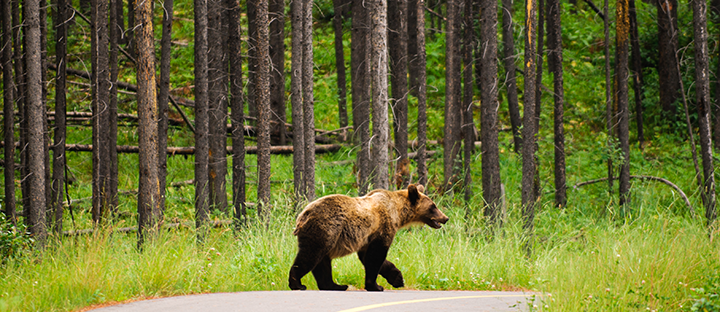Federal funding will make roads safer for people and wildlife
Today the U.S. Department of Transportation announced the launch of a pilot program to make roads safer for people and wildlife. This makes $350 million in funding available to eligible wildlife crossing projects over five years, including more than $111 million in grants through the first round of awards in 2023.
Yellowstone to Yukon Conservation Initiative (Y2Y) applauds this announcement and looks forward to working with partners and this new program to advance important wildlife crossing projects in the Yellowstone to Yukon region.
The Wildlife Crossings Pilot Program will provide grants to support projects that reduce wildlife-vehicle collisions while improving habitat connectivity for animals of all kinds, from fish to deer and elk, to grizzly bears. This will save lives and give wildlife the space they need to find food, homes and mates.
“We all want to get where we’re going safely, and we want the same for wildlife,” says Jessie Grossman, Y2Y landscape connectivity manager. “Roads are one of the biggest barriers to wildlife movement around the world. It is encouraging to see the U.S. taking this seriously and putting infrastructure solutions we know work into action through funding and science. This includes fencing, wildlife overpasses and underpasses to prevent deadly crashes.”
According to Congress, there are more than a million wildlife-vehicle collisions on U.S. roads annually. These cost society over $8 billion, and result in tens of thousands of serious injuries and hundreds of deaths for both people and wildlife every year.
Decades of research from the Yellowstone to Yukon region and beyond show that wildlife crossings work and can reduce wildlife-vehicle collisions by up to 96 per cent. They are also a cost-effective way to address an expensive problem, often paying for themselves in a decade or less.
Applications are welcome for both construction and non-construction projects from a variety of entities, including local government, state transportation departments, Tribal governments and more.
An example of a construction project is building a wildlife crossing overpass or underpass with fencing to funnel animals out of harm’s way and across roads and highways. An example of a non-construction project is research, such as creating a map of hot spots for wildlife-vehicle collisions.
Applications must be submitted electronically through Grants.gov no later than 11:59 p.m. ET, on Aug. 1, 2023. For details on projects and entities eligible for funding, visit the Federal Highway Administration Wildlife Crossings Program site.


